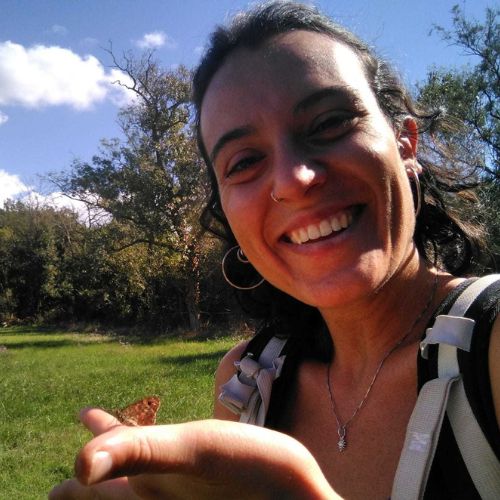
Pla-Narbona Clàudia
Clàudia Pla-Narbona Leon completed her Master of Science (MSc) at the Autonomous University of Barcelona (UAB) in 2019. During her MSc thesis she studied how species traits and landscape factors combine to allow species functional groups to live in the city, in order to offer useful tools to improve biodiversity in the city. To do so, she used butterflies as model species, as they are bioindicators, and the data from a citizen science program called uBMS (urban Butterfly Monitoring Scheme). After she finished her MSc her interest in butterflies increased considerably.
She started working with butterflies at the Natural Science Museum of Granollers in February 2021, where she met her first mentors, who introduced her to the fascinating world of butterflies. There she started field work and data analysis of the CBMS (Catalan Butterfly Monitoring Scheme) database, increasing widely her experience with citizen science data. Her main interests in the meanwhile include the study of butterfly’s biology, ecology and behaviour, the effects of global change (habitat loss and climate change) on biodiversity, as butterflies are bioindicators, and the specialist relationship between butterflies and plants. Moreover, she is greatly interested in Geographic Information System (GIS) and statistical computing and programming with R.
Her first publication was in October 2021 result of her MSc thesis, in collaboration with researchers of the Natural Science Museum of Granollers, CREAF, Autonomous University of Madrid and Complutense University of Madrid (Pla-Narbona et al., 2021).
Lately, she is developing and coordinating the new project called Jardins de papallones (Butterflies' gardens) based on improving biodiversity in urban areas by planting nectar and host plants for butterflies and other pollinators, which is at the same time a monitoring scheme.



